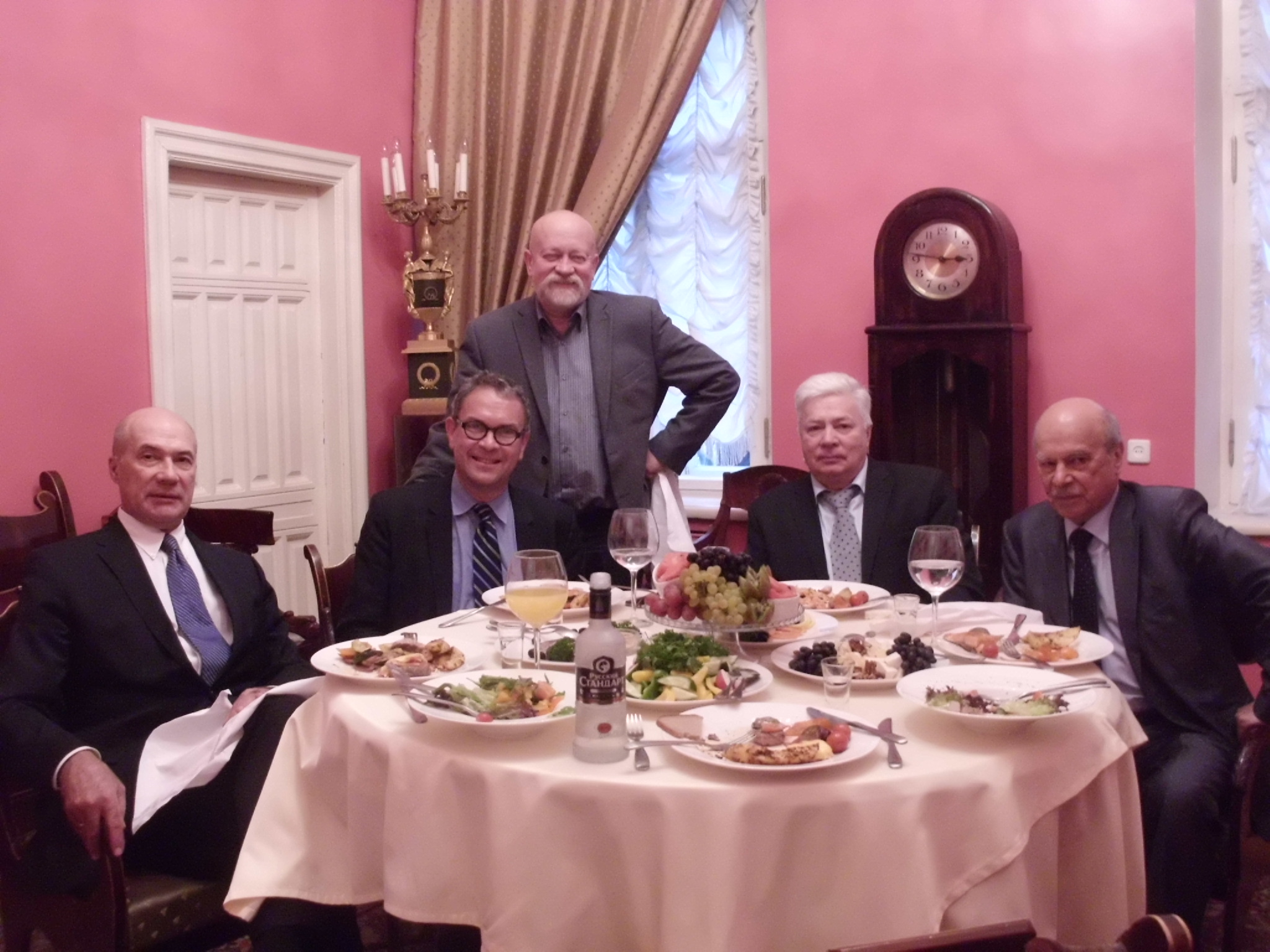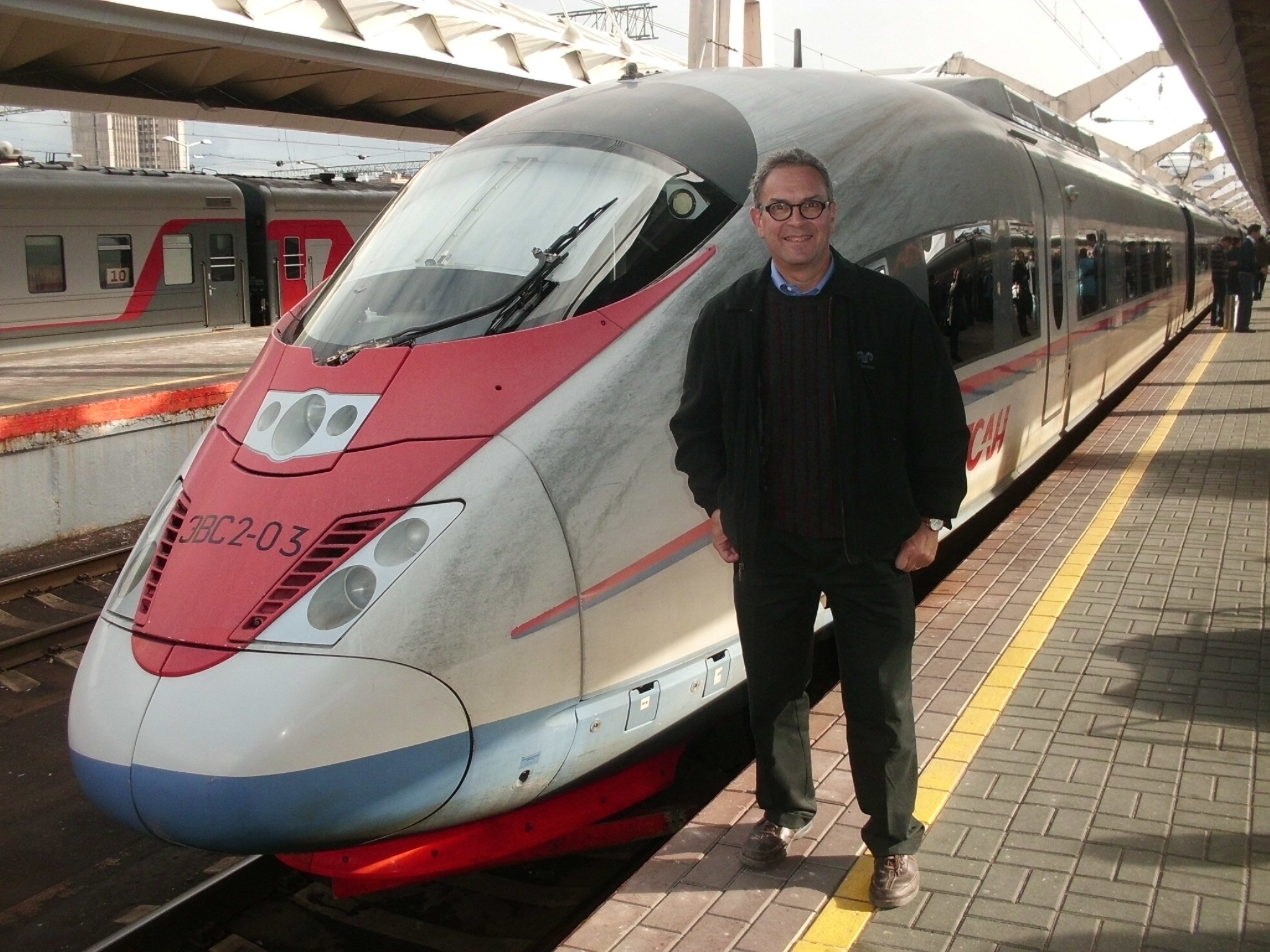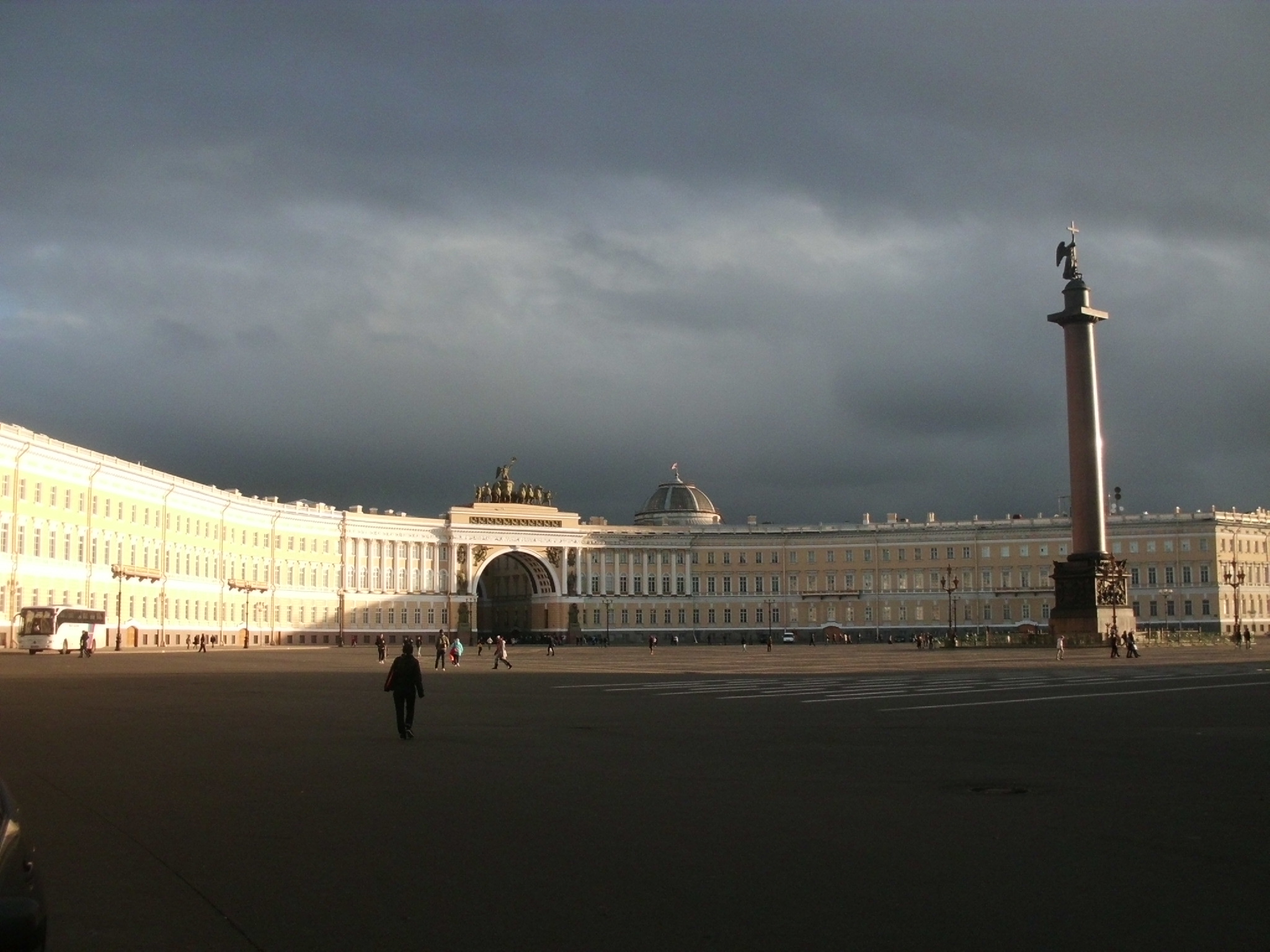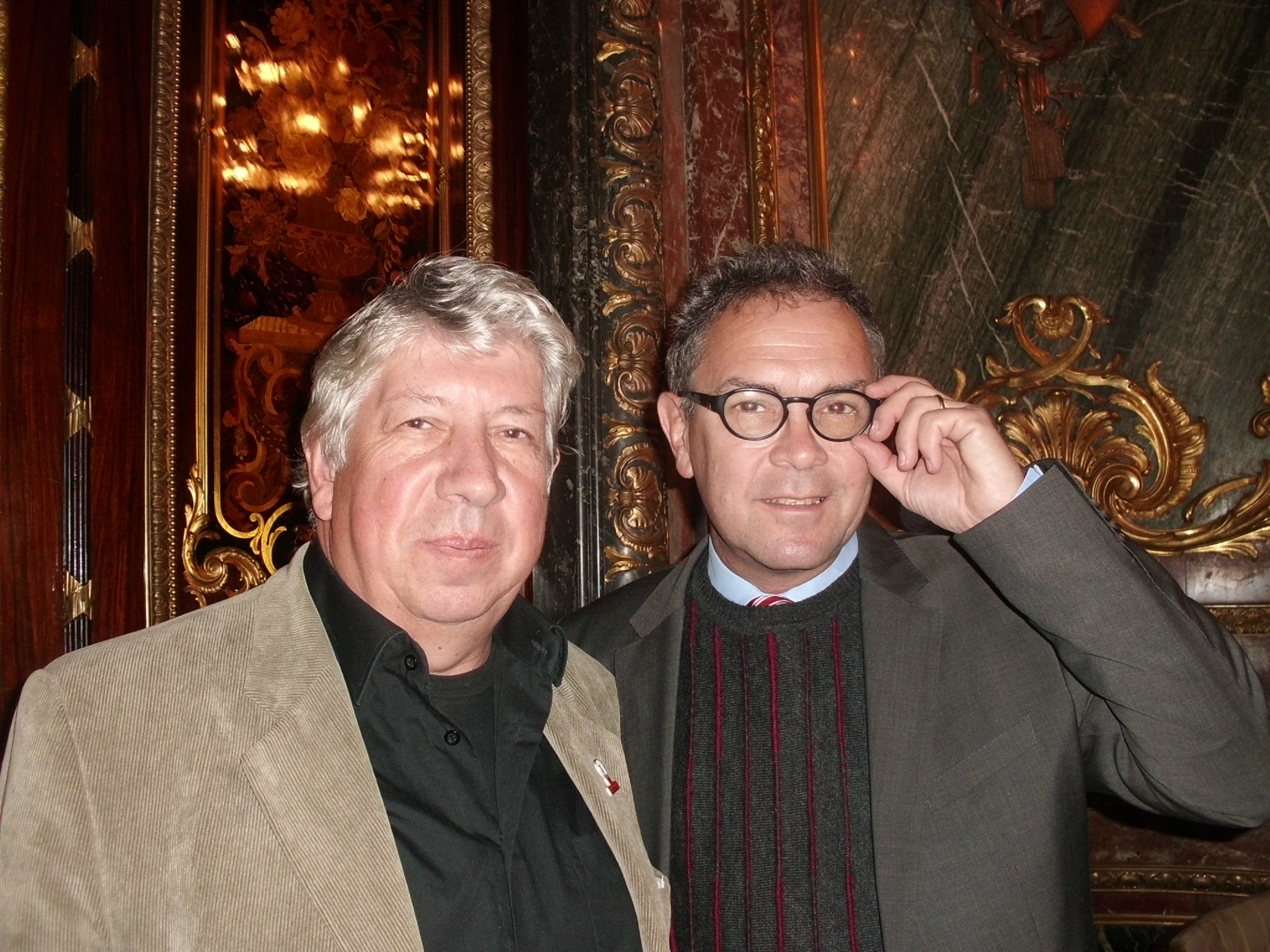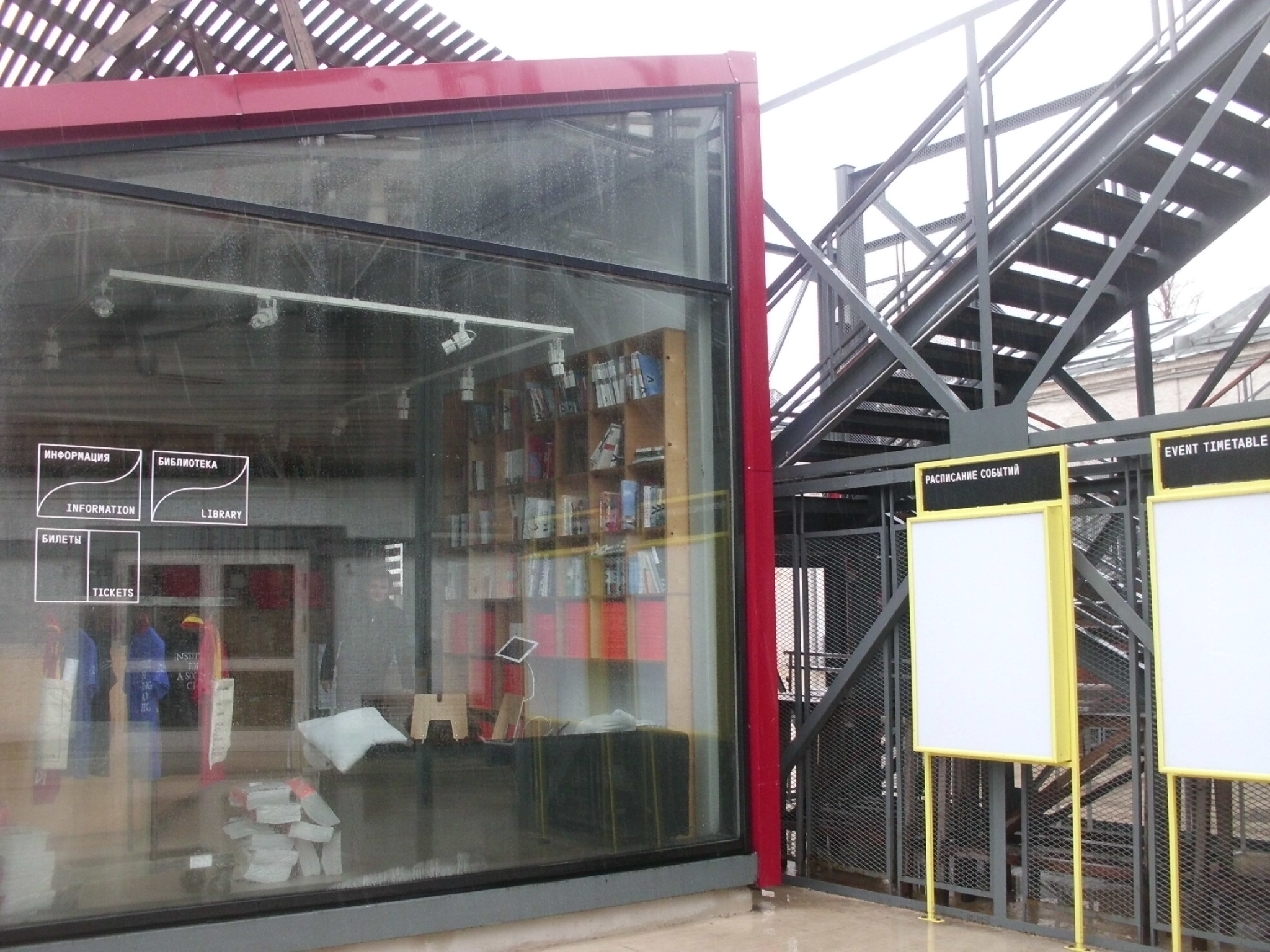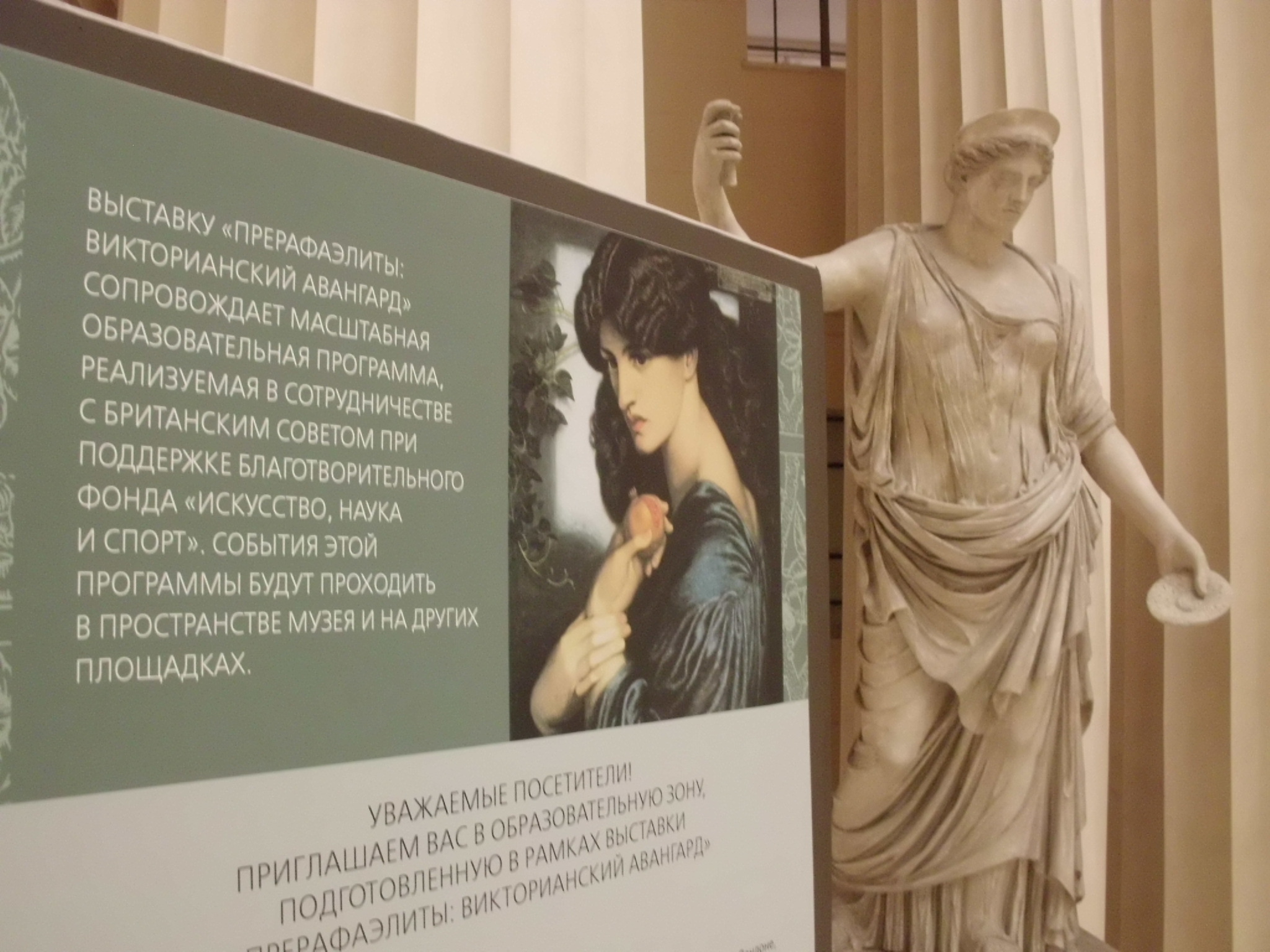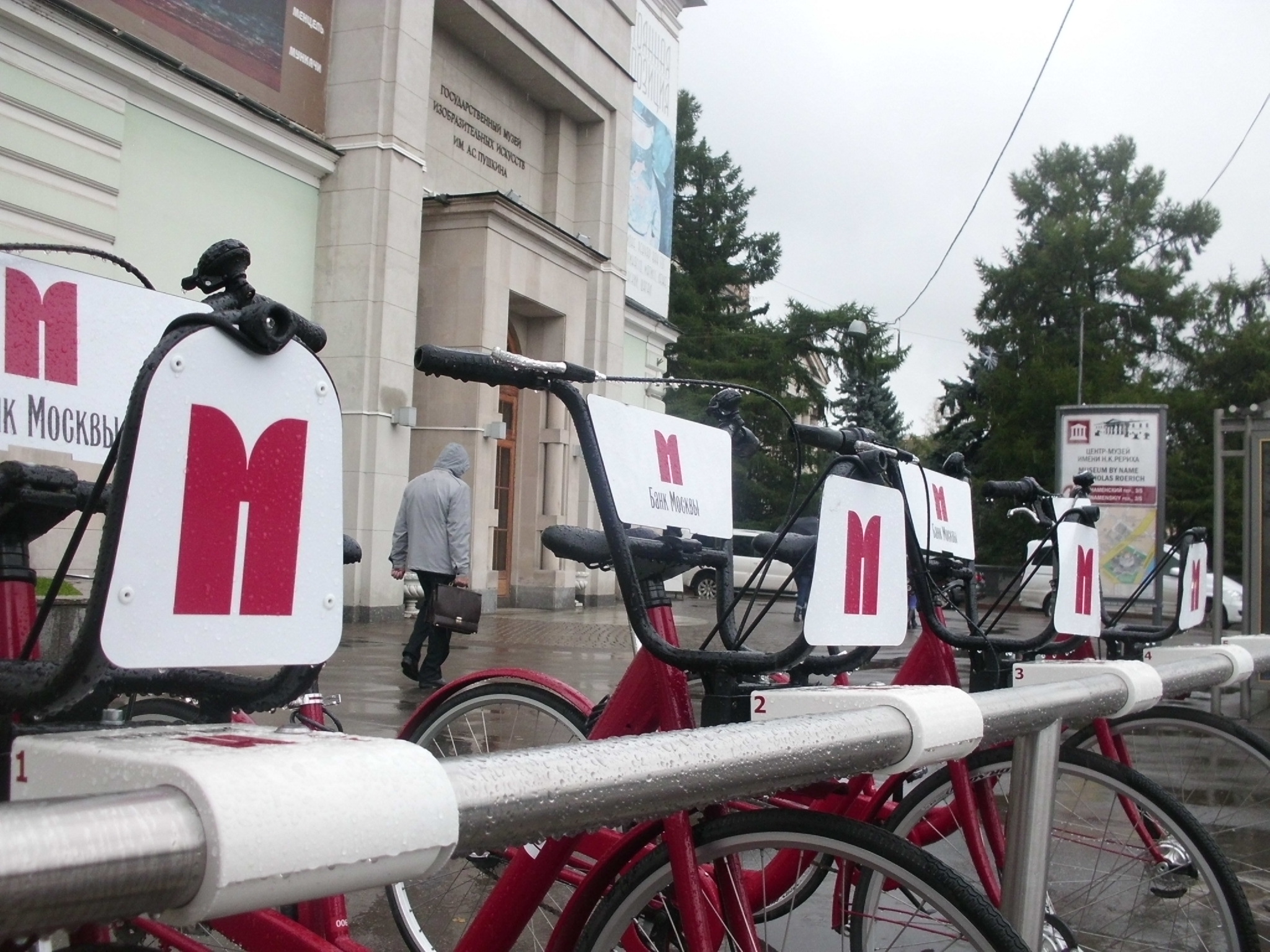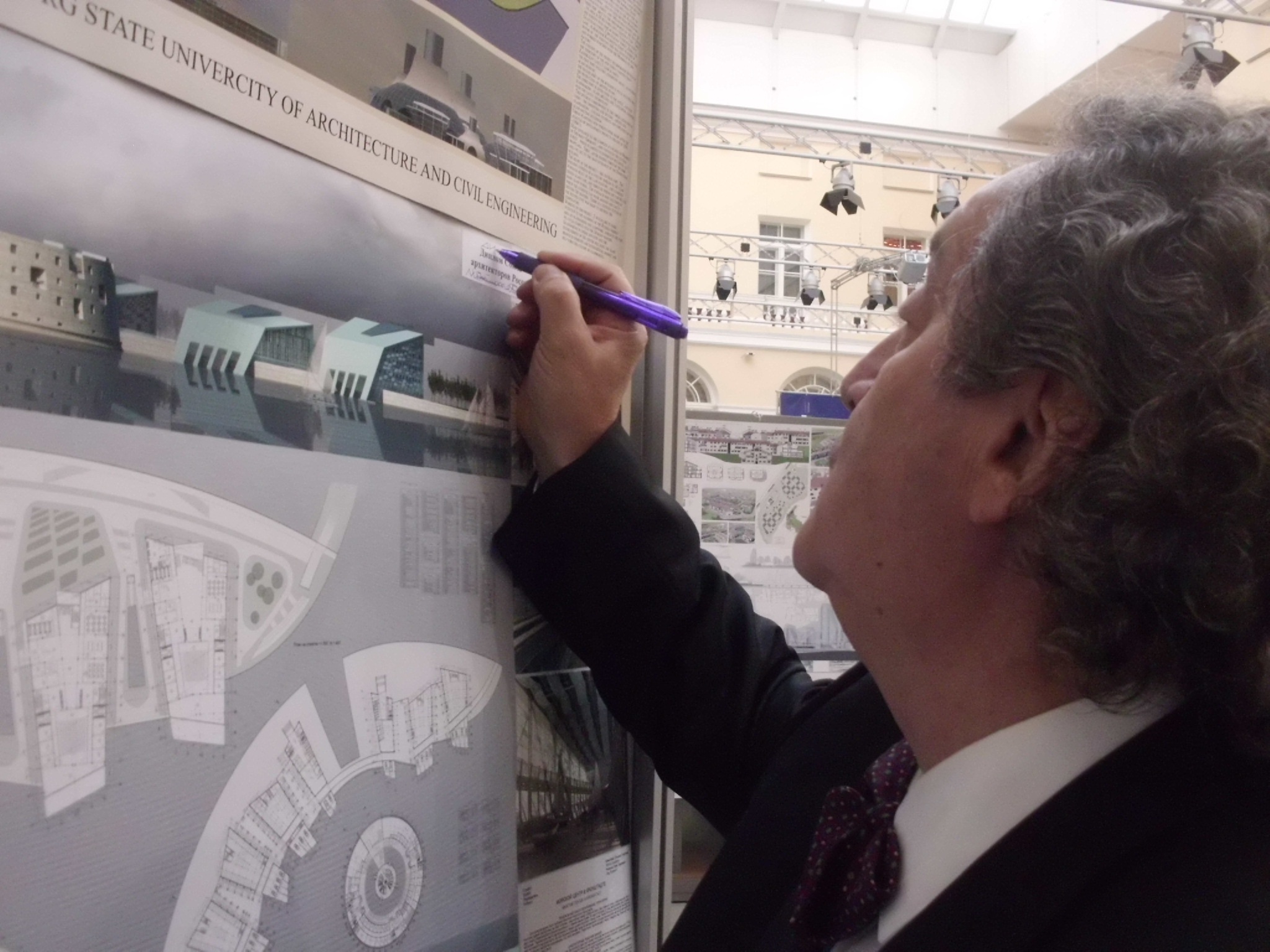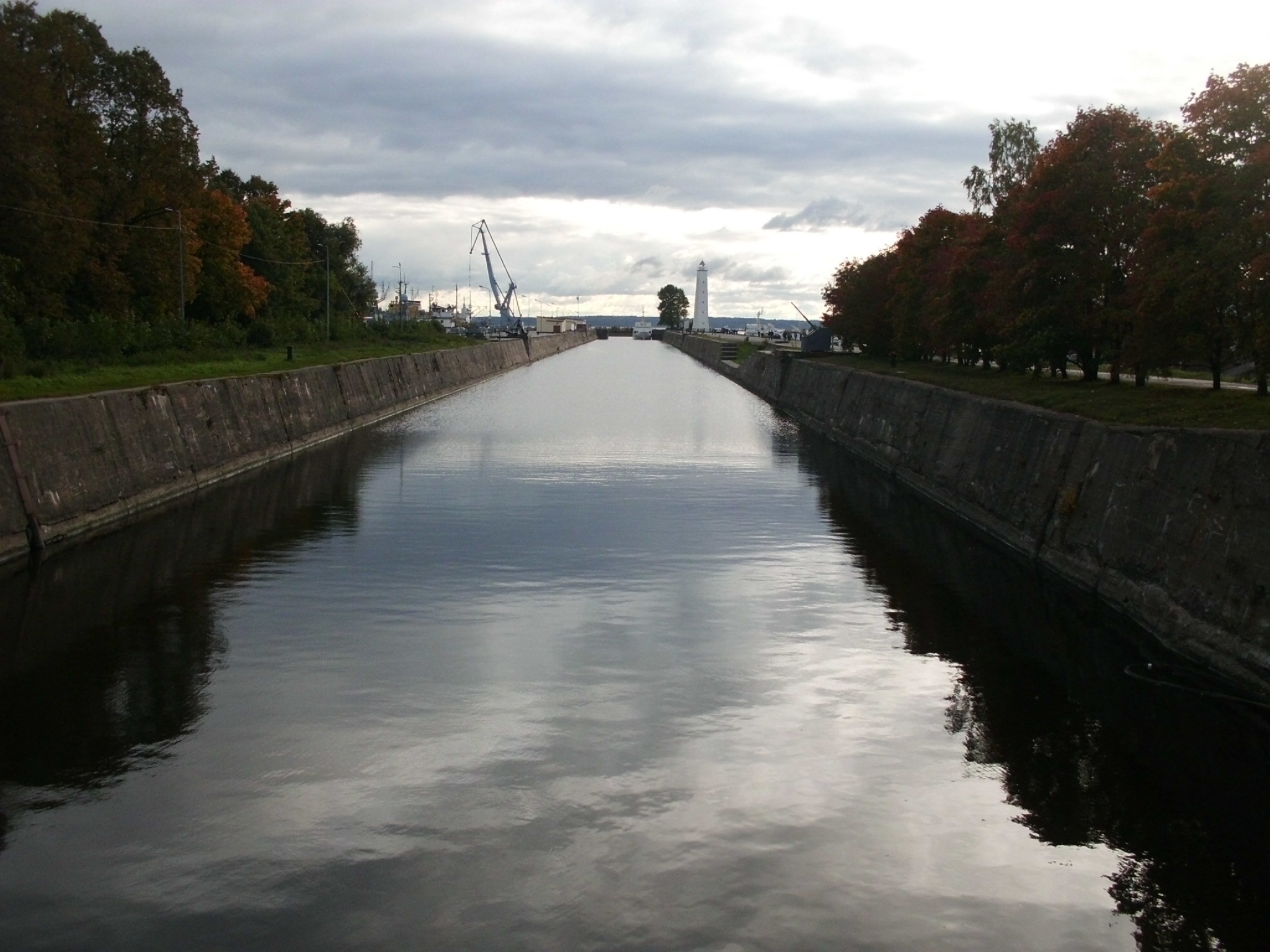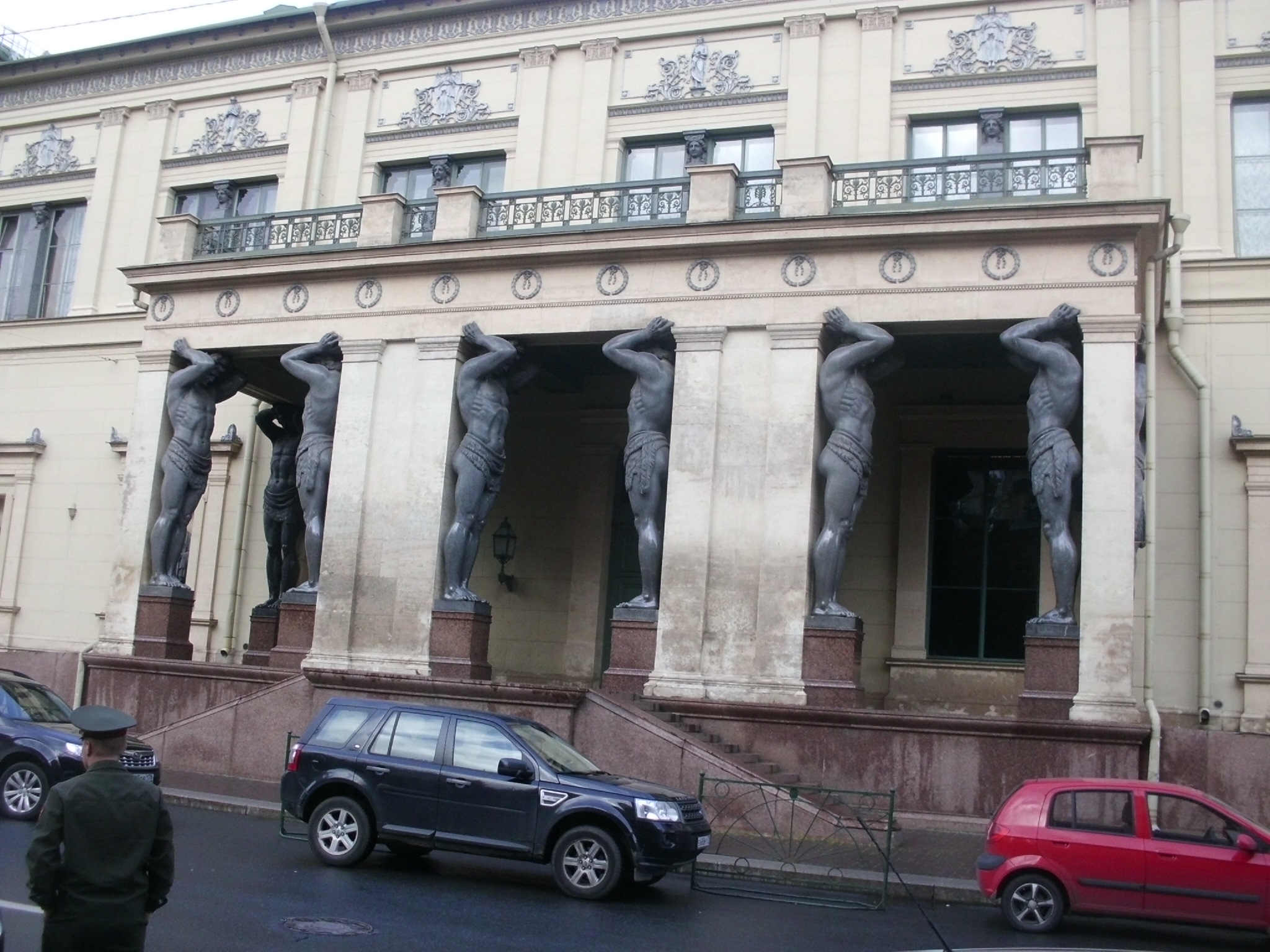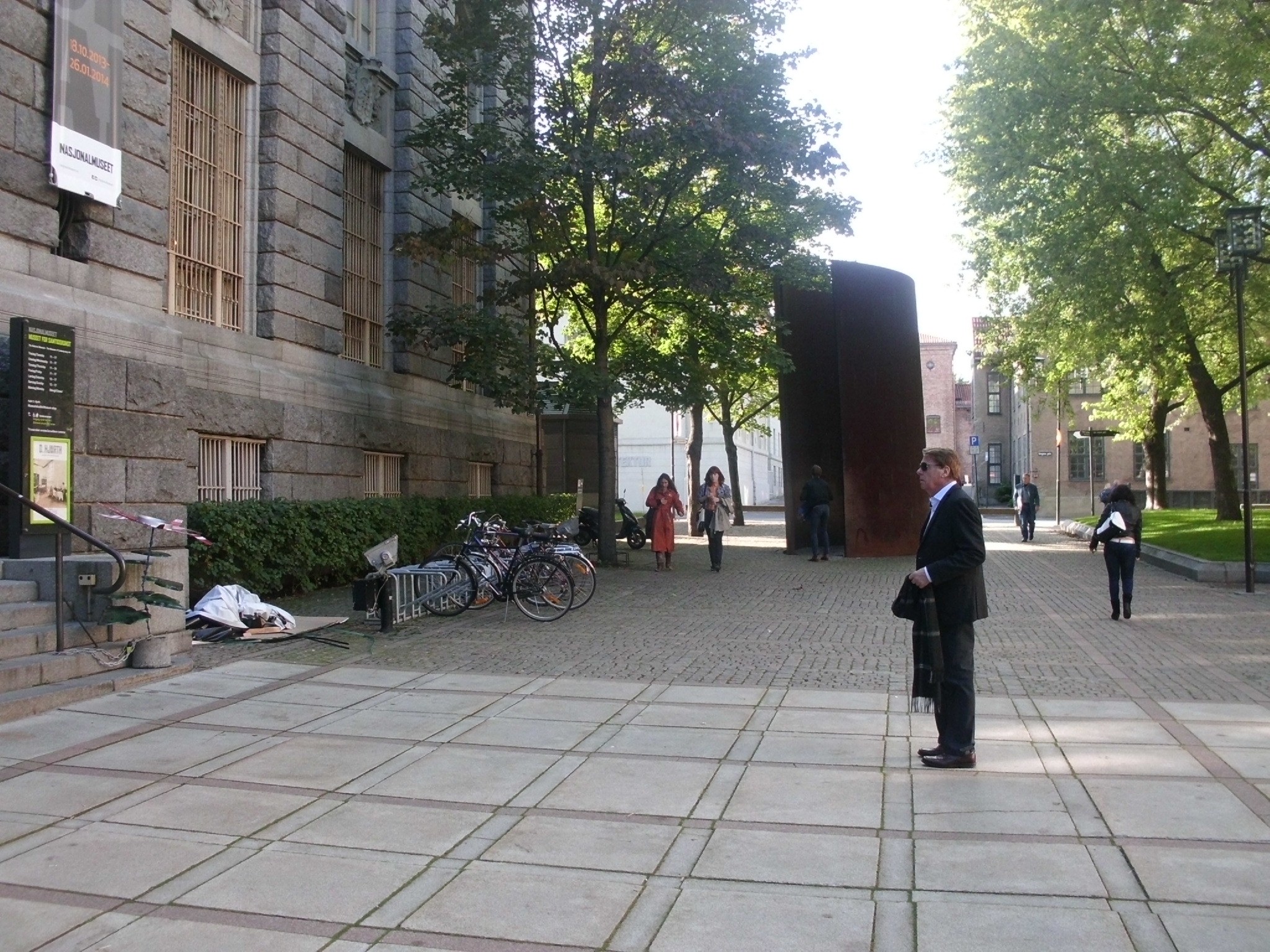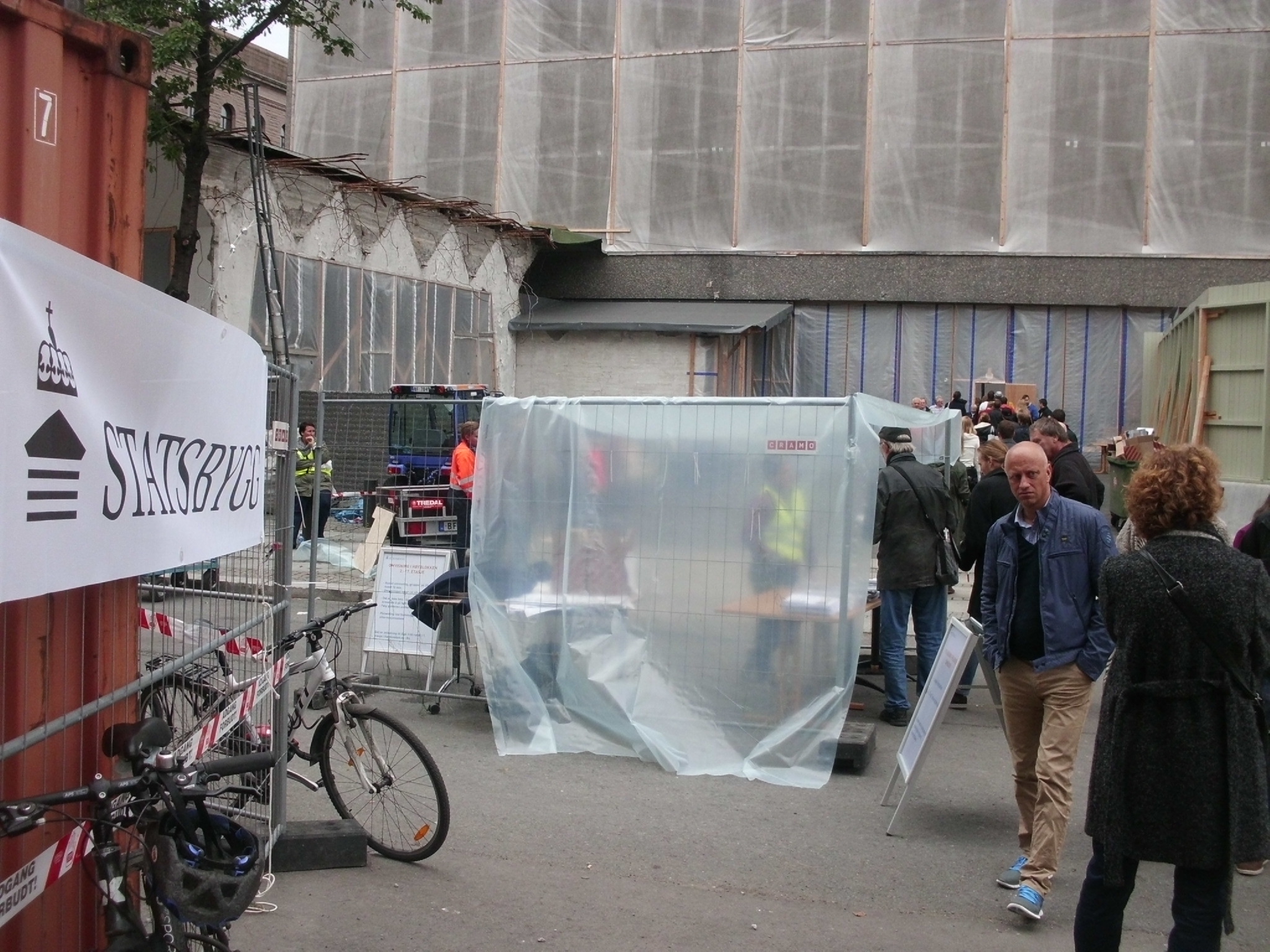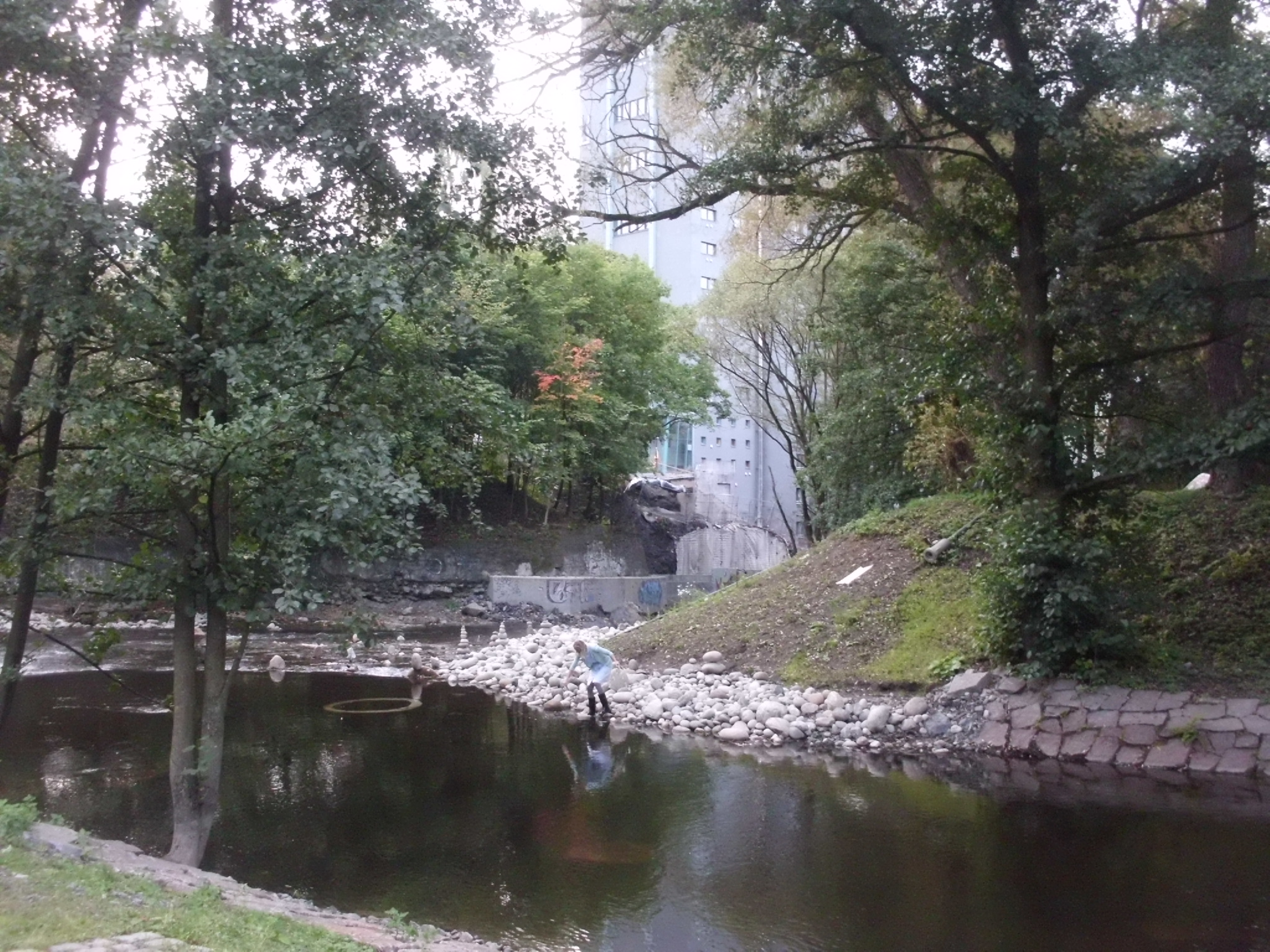by: Rick Bell FAIA Executive Director AIA New York
NORWAY
At the invitation of the Royal Norwegian Consulate, I travelled to Norway to participate in the Oslo Architecture Triennale. This conference attracts a large number of architects, urbanists, and theorists from Europe and Asia. The U.S. was represented by Barry Bergdoll (MoMA & Columbia GSAPP), Eva Franch i Gilabert (Storefront for Art & Architecture), Gregory Dreicer (Chicago Architecture Foundation), and Chase Rynd (National Building Museum). The conference, organized by Norsk Form director Andreas Vaa Bermann, focused on sustainability, and was complemented by the exhibition “Beyond the Green Door,” curated by Rotor, a young collective of architects, engineers, designers, and researchers based in Brussels. The exhibition remains on view at DogA Norsk Design, the Norwegian Architecture Center at Hausmanns Gate 16, Oslo, until 12.01.14. It brings together more than 600 projects and objects from more than 200 architecture offices, companies, and environmental organizations. The “cabinet of curiosities” exhibition questions accepted assumptions about sustainability, arguing for a more engaged interaction. A related exhibition at the Nasjonalmuseet – Arkitektur, or National Museum of Architecture, is called “Far-Out Voices,” curated by Jérémie McGowan with Caroline Maniaque-Benton, on view until 03.02.14. It speaks of lessons from 1960s U.S. counter-culture that started to change the world, especially in regard to sustainability.
RUSSIA
Invited by the Union of Architects of Russia (UAR) to speak in St. Petersburg at the time of its annual conference of emerging professionals, I was also asked to be a juror for the Lazar Khidekel Award. Named for the renowned Russian Suprematist, the Lazar Khidekel jury and other student and post-graduate awards also drew some 600 projects from 30 cities and universities throughout the Russian Federation and former Soviet Union. Suprematism, founded in St. Petersburg in 1913, is distinct from Constructivism in that it is based more on pure geometry and artistic feeling, using a limited but specific range of colors. The awards jury was led by architect Mark L. Khidekel, son of the award’s namesake, and included deans of architecture schools as well as Swiss architect Martina Bigliardi Möhr. A series of meetings was also hosted by UAR St. Petersburg President Alexei Romanov and held at the UAR/SPb’s building, the former Stieglitz mansion on Bol. Morskaya. It followed two days of equivalent discussions in Moscow, with UAR National President Andrey Bokov at Granatniy Per. 12, the UAR national headquarters, with Irina Korobina at the Shchusev State Museum of Architecture, and at the Strelka Institute in the Red October chocolate factory district.
PROFESSIONAL SOCIETIES
The AIA New York Chapter and the Union of Architects of Russia have previously worked together. The AIANY Subway Show three years ago travelled to the Zodchestvo Architectural Festival at Manejh in Moscow, literally next door to the Kremlin. Now a cavernous conference center, the space had functioned in the 19th-century as indoor training grounds for the Tsarist cavalry. With translation provided by architect/curator Vladimir Belegolovsky, I also had the privilege of speaking about New York City public works at the UAR conference. The UAR structure parallels that of the AIA, with a robust national headquarters in the Russian Federation’s capitol. Local professional society chapters are most active in major cities, such as Moscow and St. Petersburg, as they are here in the U.S. Common issues include the integration of young architects into the professional society, and the economic disparities between large design-service markets and smaller cities and towns. Facilities differ, with our colleagues in Russia benefitting from a long legacy of official support that provided copious and even palatial spaces, now proving somewhat more expensive to maintain in an environment not used to private support of not-for-profit initiatives.
ISSUES
Presenting Active Design principles in Oslo, Moscow, and St. Petersburg drew polite attention. There is a chance that the AIANY’s FitNation Exhibition may travel to at least one of these cities. But despite an increasingly sedentary lifestyle and proliferation of fast food, there was little evidence of the health impacts of obesity in the cities visited. Bike-share is widely used in Oslo, if not yet at Copenhagen levels. In Moscow, where downtown streets are extremely congested and dedicated bike lanes impossible, pedestrians stay fit by using underground passageways to cross streets at many intersections. Many more stairs to climb! And in St. Petersburg, one of the most beautiful and walkable cities on the planet, linked parks and plazas connect residential districts with workplaces and the museums.
Global practice is a common aspiration, with architects in all three cities looking at ways of diversifying practice typologically and expanding it geographically. Intense cross-fertilization throughout Europe was visible not only through the veil of conference participant lists and exhibition content, but also by the nature of the architectural discourse. Rem Koolhaas is well-known in Russia, of course, given his planning for St. Petersburg, and Delirious New York: A Retroactive Manifesto for Manhattan was just translated into Russian by Anastassia Smirnova. Published by the Strekla Press, it has become a bestseller. With Dan Wood, AIA, and Amale Andraos of WORKac designing a new future for St. Petersburg’s New Holland Island in a project commissioned by Roman Abramovich, issues of global practice and cross-cultural collaboration are very much the topic of discussion in the halls where architects meet.
As for resiliency, the project by Tatiana Kovalenko, which won the Lazar Khidekel award, draws attention to waterfront changes in the port city of Kronstadt, which since 1703 has protected the approach by sea to St. Petersburg. Formerly a naval port closed to foreign visitors, the city benefits from a lock system dating back to 1712 and infrastructure from the 18th and 19th centuries designed to withstand the ravages of Baltic blasts. Kovalenko’s project focuses attention on how historically significant early 18th-century fortifications can be reused for contemporary purposes, and augmented by uses that are sensitive to location, context, and environment. It was selected by the Lazar Khidekel Award jurors partly for how it addresses the changes that have taken place and will continue to influence this remarkable port location.
IDENTITY
Oslo is a bustling and prosperous city with an industrial waterfront infrastructure quietly becoming a beacon for recreational and cultural activity. Snøhetta’s Norwegian National Opera and Ballet is as good as it looks in the photos, and actually better when seen in use. It complements a vibrant waterfront animated by ferries and water taxis coming from and going to places far and near, including the extraordinary FRAM museum. This simple A-frame structure documents Amnundsen’s polar explorations and even contains the ship – the FRAM – he used to get, first, to the South Pole. The Norsk Arkitektur Form provided a wonderful location for both conference and exhibition, but was challenged, given the spring-like weather, by strolls along the adjacent canal in the lively Grünerløkka neighborhood. A particular highlight was the Nasjonalmuseet – Arkitektur Museum, which was adapted and extended by Sverre Fehn, who was awarded the Pritzker Architecture Prize in 1997. It will remain in use after an administrative reorganization physically combines three sister museums into one location.
Moscow is New York on the Neva. Hustling, bustling, tough, and gruff, it is full of surprising visual, cultural, and culinary amenities. Seeing the blockbuster pre-Raphaelite show at the Pushkin Museum was phenomenal. A line down the street corresponded to the intense curiosity of the knowledgeable cohort of weekday museum-goers. The permanent collection rivals that of New York’s Metropolitan Museum and the Louvre in Paris, but was surprisingly devoid of visitors. The urbanity of any city can be characterized, in part, by the size of its subway system and the frequency of the trains. Moscow’s is unequalled for beauty and usefulness, but is also remarkable for its wayfinding system which incorporates station lists as a form of cartography, all in Cyrillic. Quick and affordable, the metro was the best way back from the UAR to a Bolshoi performance of “Paquita” by the Ballet de l’Opéra National de Paris. In Moscow, the Shchusev State Museum of Architecture is currently showing an exhibition on the Melnikov House, which, despite efforts of the architectural community, is still at risk. And the Strelka Institute has great indoor/outdoor space in the vibrant Red October chocolate factory district across a footbridge over the Neva River
St. Petersburg is a classically-proportioned west-facing concoction on the eastern end of the Baltic Sea. Its canals and palaces hint at the Dutch and French influences that gave it shape. But it is the detail and the changes that catch the eye, from the caryatids and atalantes holding up many a frieze and cornice. The light is special, turning from gray to pale blue, with the sun bursting through, suddenly, to enflame the golden domes of the polychrome churches. And the Hermitage is everything you’ve heard it is – and more, with the Secretariat military buildings across Palace Square being refitted to house contemporary and 20th-century art. A walk to the battleship cruiser Aurora helps put the 1917 Revolution into perspective. The Bolsheviks used the Aurora’s guns on October 25th that year to signal the storming of the Winter Palace.
LESSONS
From Oslo, we can learn the pleasure of the harbor. People sit outside Snøhetta’s Opera House or the new Astrup Fearnley Museum designed by Renzo Piano further down the promontory to watch the ships and sunsets,. They stroll through the parks and fortresses with an understanding that North Sea wealth is channeled back to urban amenity.
From Moscow, we can learn how the political identity of a city can be tempered by its cultural traditions and improvisations. A city at once chic and broad-shouldered, the pace is comparable to New York and the scale more like Chicago. This is another city that doesn’t sleep. We learn the importance of mass transit and the inherited benefit of physical and economic planning. And high speed rail lines now connect Moscow to St. Petersburg in less than 4½ hours, either on the super-sleek Sapsan, or the comfortably dependable Nevsky Express.
From St. Petersburg, we can learn the intersection of past and future. The palaces are recycled to museums, and military officers’ quarters to high-end hotels. Adaptive reuse extends the beneficial occupancy of these structures despite regime change and ideological overthrow. A softer city of those who walk and those who sip; the vodka of choice is not Moscow’s Russian Standard but the more nuanced Putinka, or little Putin. Some architects in St. Petersburg remember Vladimir Putin’s effectiveness as city administrator. More recently he has channeled Federation and Gazprom financing to his home town. The degree to which this has helped with museum renovations and public space improvement is palpable.
What can Oslo, Moscow, and St. Petersburg learn from New York City? There are many precepts in our Platform for the Future of New York that came through our partnership during the 12 years of Mayor Michael R. Bloomberg’s administration. These include PlaNYC (environmental planning around ambitious but achievable goals), and Vision2020, a comprehensive engagement with the waterfront, recognizing diversity of context and competing constraints for the public good.









